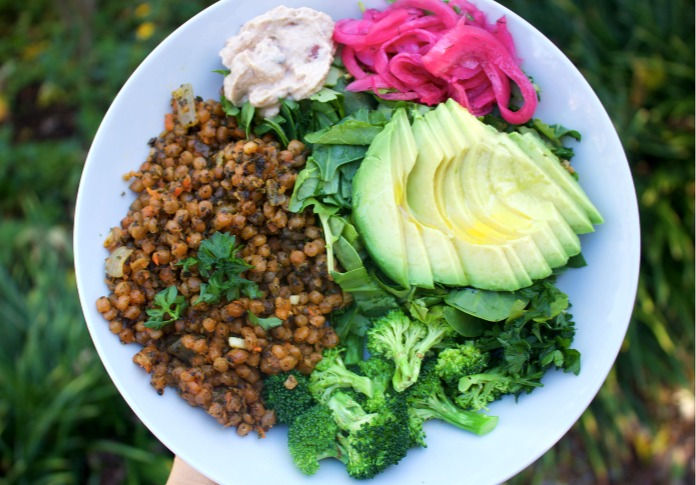Couscous vs Israeli Couscous? Ft. Michael Solomnov Israeli Couscous Recipe.
- Rachel Westerfield

- Oct 23, 2020
- 3 min read
Where Did Couscous Come From?
Couscous is pasta in the shape of small orbs and is made from wheat and barley. Couscous is a staple in North African cuisines of Morocco, Algeria, and Libya. One of the first references of couscous was in a 13th-century Muslim cookbook described as “known all over the world,” and was said to cost very little and provide a lot of nourishment. Couscous made its way to northern Europe when Charles de Clairambault, a naval commissioner, and his crew had brought flour and made couscous with dates. In 1630, a French traveler, Jean-Jacques Bouchard referred to couscous as “is made of little grains like rice, and which puffs up considerably when cooked.” Today, Couscous is known as the national dish of Morocco.
Semolina and water are bound together. Each of the small pellets of water and semolina must be rolled and sprinkle them with flour to prevent sticking. The pellets are then separated by a sieve. If pellets are too small, they get rerolled into the larger pellets. This process repeats until all the semolina is used. Before machines, groups of women would gather with each other for several days to make large batches together. Once the couscous is dried, it is cooked using a steamer and is served with a meat and vegetable stew.
Israeli couscous, however, is not technically couscous. Instead of semolina, it is made of baked wheat, and it has larger grains that are about the size of pearls. In Israel, they call their “couscous” ptitim, meaning “flakes” in Hebrew. Its origin starts after the War of Independence when Israel was rationing food. Prime Minister David Ben-Gurion gave Osem, a leading food manufacturer and distributor, the job of creating a scratch that was more affordable than rice. The company came out with wheatpaste in the shape of rice grains, ptitim, and the product became a staple. Later on, the company made couscous into round pearls and Israeli couscous was formed! After some time, Palestinian couscous was made using bulgar wheat. Ptitim and “Israeli couscous” still comfort foods in Israel and only recently get love from chefs at the end of the 20th century. Israeli couscous later took off in the US in the 1990s when the Mediterranean diet was a trend.

Pictured above is my attempt at Michael Solomnov's Israeli Couscous recipe, from his book Zahav, served with some veg! The recipe calls for toasting the pearls in olive oil before cooking. I learned that this is a common practice for making Israeli couscous as it brings out their golden color and enhances a nutty flavor.
Recipe
Ingredients...
- 2 cups Israeli couscous - 3/4 cup diced onion -2 cups maitake or
- 5 tbsp olive oil - 1/2 cup dry white wine cremini mushrooms
- 6 cups water or stock - 1 cup tomato puree - 1/2 bunch of kale
- 1 carrot, peeled and grated. - 1 tsp black pepper about 2 cups
- 4 garlic cloves, chopped - 3/4 tsp kosher salt - 3 tablespooons butter
Directions...
Preheat the oven to 350 F. Toss the couscous with 1 tbsp of the olive oil and spread out evenly on a baking sheet. Bake about 15 minutes and set aside.
Bring the stock to a simmer in sauce pan.
Warm 2 tbsp of olive oil in a large skillet over medium heat and add the carrot, garlic, and 1/2 cup of the diced onion. Cook, stirring occasionally, until the onion has softened, about 8 minutes. Add the couscous and stir to coat well with the oil.
Add the wine, tomato puree and cook until the wine has evaporated and the tomato puree reduced about 5 minutes. Add the salt and pepper.
Start adding the stock in 1/2 cup increments. Make sure that the stock is still simmering and adjust the heat to keep it at a simmer. Stir often until all the liquid has been absorbed before adding the next 1/2 cup. It will take about 40 minutes for all the liquid to be absorbed and the couscous to cook.
In a new skillet, warm 2 tbsp olive oil over medium heat and add the mushrooms and remaining onion. Cook until the onion has softened and begun to brown, about 10 minutes. Add the kale and cook until the leaves are tender, 5 minutes. Take off the heat and swirl in 1 tbsp of the butter.
Fold the mushroom-kale mixture into the couscous. Just before serving, fold in the remaining 2 tbps buter. Enjoy!
Sources:
Balslev, Lynda. “The Surprising History of Israeli Couscous: The Nosher,” August 20, 2019. https://www.myjewishlearning.com/the-nosher/the-
Callard, Abby. “Newly Obsessed With Israeli Couscous.” Smithsonian.com. Smithsonian
Institution, March 22, 2010. https://www.smithsonianmag.com/arts-culture/newly-
Tarnopolsky, Noga. “Israeli Couscous, a Gourmet Ingredient? Only in the Minds of
American Chefs.” The World from PRX, March 11, 2014.
“The History of Couscous.” Fill Your Plate Blog, January 20, 2017.
“What Is Couscous?” Wonderopolis. Accessed October 23, 2020.













Comments